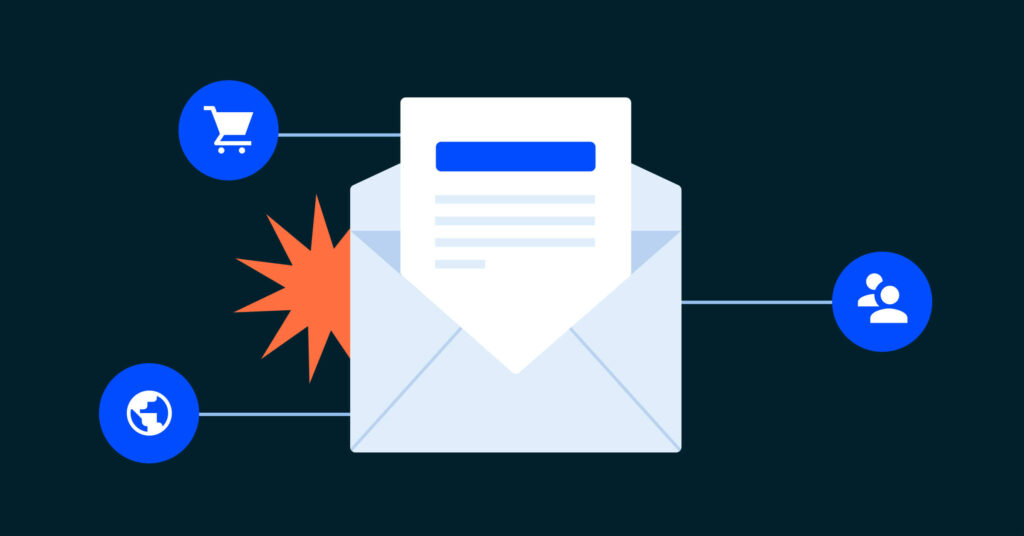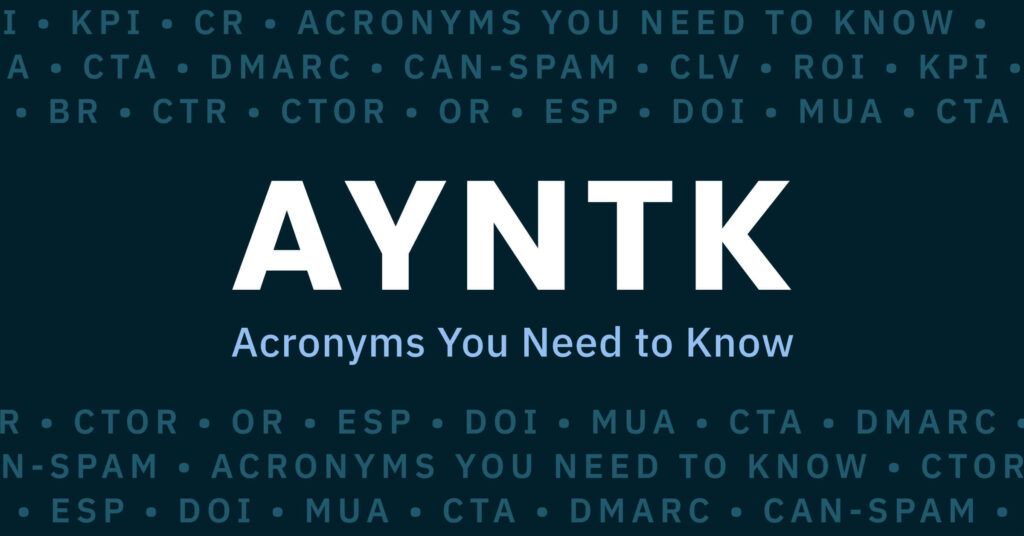No products in the cart.
Email Marketing
Email Marketing Terms You Need To Kno
Email marketing remains a cornerstone of successful business communication and outreach strategies in today’s digital landscape. We’ve compiled all the essential terms you need to know to sort through the wealth of jargon and technical terminology. Whether you’re a seasoned marketing professional looking to refresh your knowledge or an aspiring marketer eager to learn the ropes, this resource is designed to empower you with a comprehensive glossary of key email marketing terms. From the basics to more advanced concepts, this guide aims to demystify the world of email marketing and equip you with the terminology necessary to excel in this ever-evolving field.
Key Vocabulary
Understanding the essential vocabulary within email marketing is crucial for driving successful campaigns and achieving impactful results. From “segmentation” to “personalization,” these key terms serve as vital techniques to optimize strategies and enhance overall audience engagement.
Technical Terms
- Segmentation: the act of grouping your contacts by their characteristics or the actions they take
- Personalization: the gathering and use of personal information of a contact
- Dynamic Content: website or email content that changes based on who is viewing it
- Email Automation: a marketing technique that lets marketers schedule and trigger emails based on date, characteristics of their contacts, or the behavior their contacts take
- List Hygiene: the practice of keeping your email list full of engaged, active contacts
- Omnichannel: a marketing approach that provides a seamless and integrated experience for customers across various channels and devices
- Spam: unsolicited and irrelevant email messages sent in bulk to a large number of recipients without their consent or interest in receiving such communications
- Behavioral Marketing: a marketing strategy focusing on understanding and leveraging consumer behaviors, preferences, and actions to deliver personalized and targeted marketing messages and experience
- Customer Journey: the process that a potential customer goes through from the initial contact with a business or brand to the final purchase or conversion
- Campaign: a coordinated and targeted email series sent to a specific audience, often aiming to promote a product, service, or encourage subscribers to take a specific action
- Domain: the unique address that identifies a sender’s email server and is used to establish the sender’s credibility and reputation for email deliverability
- Spoofing: the deceptive practice of forging the sender’s email address to appear as if it is from a legitimate and trustworthy source
- Workflow Automation: the process of using technology to automate repetitive and manual tasks that are part of a larger process or “workflow”
- Follow Up: the communication or actions taken after an initial interaction, such as a sales call, email, meeting, or event
Email Types
- Mass Email Marketing: sending one email message to a large group or list of contacts
- Plain Text Email: an email that uses only text, without the use of images, links, graphics, HTML code, or formatting
- Promotional Email: an email sent to inform the email list of your new or existing products or services
- Cold Email: an unsolicited email sent to a recipient who has no prior relationship or connection with the sender
- Bounced Email: an email message that gets rejected by a mail server
- Bulk Email: an email that is sent to a large group of recipients at once
- CC Email: (carbon copy email) a feature that allows you to send a copy of an email to additional recipients alongside the primary recipient
- BCC Email: (blind carbon copy email) is a type of email communication where the sender includes recipients in the BCC field to conceal their identities from each other
- Transactional Email: a type of email triggered by an action on a website or mobile application – usually a purchase
- Newsletter: a regularly distributed email publication sent to subscribers that provides updates, news, information, or promotions
Testing & Reporting Terms
- Unique Open: the number of individual recipients who have opened an email, counting each recipient only once regardless of how many times they opened the email
- Email Deliverability: the percentage of emails that successfully reach the recipients’ inboxes out of the total number of emails sent
- Hard Bounce: an email that cannot be delivered due to a permanent issue
- Soft Bounce: an email that cannot be delivered due to a temporary issue
- Email A/B Testing: measures response rate to different variations of the same email, also known as split testing
- Multivariate Test: a process for testing hypotheses where more than one variable is changed
- Opt Out: means a contact has expressed their desire to be removed from an email list, also called unsubscribe
Ready To Get Started?
Take your new email marketing knowledge, and get started today with a 14-day free trial of ActiveCampaign.
AYNTK
(Acronyms You Need To Know)
Navigating the world of acronyms is essential for email marketers to decode the intricacies of their campaigns and gauge their success. So today’s CTA is to get your ROI on all the AYNTK to master email marketing.
Technical Acronyms
- ESP (Email Service Provider)
- Allows users to send email campaigns to a list of subscribers
- DOI (Double Opt-In)
- A process where subscribers to an email list must verify their interest in signing up before being sent emails
- MUA (Mail User Agent)
- The software or application used by recipients to access, read, and manage their email
- CTA (Call to Action)
- The phrase or button that a marketer presents to potential customers, nudging them toward a specific action
- DMARC (Domain-Based Message Authentication, Reporting, and Conformance)
- An email validation protocol designed to protect email domains from being used in phishing and spoofing attacks
- CAN-SPAM (Controlling the Assault of Non-Solicited Pornography And Marketing)
- A law created in 2003 that establishes the rules for commercial email and messaging, gives people the legal right to have a company stop emailing them and states the penalties for those who break the law
- CLV (Customer Lifetime Value)
- The predicted amount of revenue an average customer will generate for your business over the entire lifespan of your relationship with them
- ROI (Return on investment)
- The measurement of the profitability and overall success of an email marketing campaign, calculated by comparing the revenue or cost savings to the total cost of the campaign
Reporting Acronyms
- KPI (Key Performance Indicator)
- A way to measure the performance of a business and its employees over time.
- CR (Capture Rate)
- The percentage of individuals who take a desired action out of the total number of people who had the opportunity to do so, also known as the conversion rate
- BR (Bounce Rate)
- The percentage of website visitors that leave a website after looking at only one page
- CTR (Click-Through Rate)
- A ratio that compares how many people click a specific link to the number of total users that view a webpage or email
- CTOR (Click To Open Rate)
- The percentage of people who open an email campaign and also click on a link within that campaign
- OR (Open Rate)
- The percentage of delivered emails that were opened by recipients
Email marketing is a landscape both dynamic and hard to grasp. Understanding the key terms and acronyms is crucial for effective campaign craftsmanship and audience engagement. These concepts empower marketers to take their strategies to the next level. Armed with this knowledge, marketers can navigate the intricacies of email marketing, deliver relevant content, and establish meaningful connections with their audience, generating infinite ROI.
Test Yourself
Feeling confident? Need to practice? Test yourself below!
Question: The practice of keeping your email list full of engaged, active contacts is called List ____.
Question: What does CTR stand for? (Hint: it is a ratio that compares how many people click a specific link to the number of total users that view a webpage or email)
Answer: Click-Through Rate
Question: Which of the following is an example of a KPI? Capture rate, open rate, or email deliverability.
Answer: All of the above!
Question: True or False: A “Unique Open” counts every time a user has opened a single email.
Question: What is the difference between a “Hard Bounce” and a “Soft Bounce?”
Hard bounces occur due to temporary issues, while soft bounces are permanent delivery failures.


